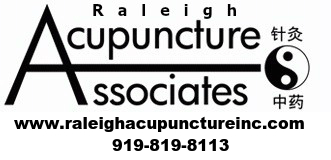
Trigeminal neuralgia is a debilitating condition characterized by severe facial pain. While conventional treatments often provide limited relief, acupuncture offers a promising alternative. This trigeminal neuralgia case report explores the experience of a 45-year-old man who found significant pain relief from trigeminal neuralgia through acupuncture therapy.
What is Trigeminal Neuralgia?
Trigeminal neuralgia (TN) is a chronic pain disorder affecting the trigeminal nerve. This condition is characterized by sudden, severe, and stabbing facial pain, typically on one side of the face. The pain can be triggered by various stimuli, such as touching the face, chewing, talking, or even a light breeze. Despite advancements in medical treatments, many patients experience inadequate pain relief and intolerable side effects. Acupuncture, rooted in traditional Chinese medicine (TCM), has emerged as a potent alternative therapy for managing TN symptoms.
Etiology
The exact cause of trigeminal neuralgia is often unknown, but it is thought to result from compression or irritation of the trigeminal nerve, usually by a blood vessel pressing on the nerve as it exits the brainstem. Other potential causes include multiple sclerosis (MS), tumors compressing the nerve, or trauma to the face.
Symptoms
The hallmark symptom of trigeminal neuralgia is intense, electric shock-like pain that can last from a few seconds to several minutes. The pain is typically unilateral, affecting one side of the face, and can be triggered by everyday activities like brushing teeth, talking, or eating. Between episodes of pain, individuals with TN may experience periods of remission, although the condition can worsen over time.
Conventional Treatment Approaches
Medications
The first-line treatment for trigeminal neuralgia involves anticonvulsant medications such as carbamazepine (Tegretol) or oxcarbazepine (Trileptal). These medications help reduce nerve firing and alleviate pain in many patients. Other medications like gabapentin (Neurontin) or baclofen (Lioresal) may also be prescribed to manage pain.
Surgical Interventions
For individuals who do not respond to medication or experience intolerable side effects, surgical options may be considered. Microvascular decompression (MVD) surgery involves relocating or removing the blood vessel compressing the trigeminal nerve. Other surgical procedures include gamma knife radiosurgery, which uses focused radiation to target the trigeminal nerve or percutaneous procedures like radiofrequency ablation or balloon compression.
Nerve Blocks
Some patients may benefit from nerve blocks or injections of medications like lidocaine or steroids to temporarily numb or block pain signals transmitted by the trigeminal nerve.
Neurostimulation
Techniques such as transcutaneous electrical nerve stimulation (TENS) or deep brain stimulation (DBS) may modulate pain signals and relieve individuals with refractory trigeminal neuralgia.
Western Medicine Limited Benefits
Despite these treatment options, trigeminal neuralgia can be challenging to manage, and some individuals may continue to experience debilitating pain. In recent years, there has been growing interest in complementary and alternative therapies like acupuncture, which offer potential benefits for pain management and symptom relief in patients with trigeminal neuralgia.
Acupuncture Treatment for Trigeminal Neuralgia
From a Traditional Chinese Medicine (TCM) perspective, trigeminal neuralgia is understood as a manifestation of underlying imbalances in the body’s energy (Qi) and blood circulation, as well as disharmonies among the organ systems. Acupuncture and other TCM modalities like herbal medicine and dietary therapy aim to rebalance these energies and restore harmony within the body to alleviate pain and improve overall well-being.
TCM Diagnosis
In TCM, the diagnosis of trigeminal neuralgia involves a comprehensive assessment of the patient’s overall health, including their medical history, lifestyle factors, and specific symptoms related to TN. Practitioners may also utilize traditional diagnostic techniques such as tongue inspection, pulse diagnosis, and palpation of acupuncture points to identify patterns of disharmony within the body.
Patterns of Disharmony
TCM identifies several patterns of disharmony that may contribute to the development of trigeminal neuralgia. Some of the more common imbalances include:
Liver Qi Stagnation: Emotional stress and frustration can lead to stagnation of Liver Qi, resulting in energy blockages and pain along the course of the trigeminal nerve.
Blood Stasis: Poor circulation or stagnation of blood flow may cause sharp, stabbing pain characteristic of TN.
Kidney Deficiency: Weakness or deficiency in the Kidney organ system, which governs the bones and nervous system in TCM, can manifest as chronic pain conditions like TN.
Phlegm-Dampness Accumulation: Excess phlegm or dampness in the body can obstruct the flow of Qi and blood, contributing to nerve compression and pain sensations in the face.
Acupuncture Treatment for Trigeminal Neuralgia
Acupuncture offers a holistic approach to treating trigeminal neuralgia by addressing the underlying patterns of disharmony identified in each patient. Treatment involves the insertion of fine needles into specific acupuncture points along meridians related to the affected area and points located on distant parts of the body to rebalance energy flow and address systemic imbalances.
Overall, acupuncture treatment for trigeminal neuralgia from a TCM perspective focuses on restoring balance and harmony within the body’s energy systems. It addresses the condition’s symptoms and root causes to promote long-term pain relief and improved quality of life.
Trigeminal Neuralgia Case Report
Our patient in this trigeminal neuralgia case report was a 45-year-old man who had been experiencing severe nerve pain in the upper and middle facial nerves for the past three months. The pain came in fifteen to sixty-second intervals, 10 out of 10 in intensity, about fifteen to twenty times a day. Pain medications barely touched the pain. He was at his wit’s end, unable to concentrate at work and a wreck at home.
He had initially been prescribed carbamazepine, an anticonvulsant medication, as a first-line treatment to reduce nerve firing and alleviate pain. When that didn’t help, his doctor added gabapentin and tricyclic antidepressants. These reduced his pain by ten percent, but no more than that. At this point, he did not want to have surgery. He was nervous about possible adverse effects and not convinced that it would significantly help. In addition, the cost was prohibitive.
Acupuncture Treatment Plan
The constant pain had spiked his stress levels, which was reflected in his pulse, which was tight and wiry. His tongue displayed heat and stress, displaying a red body and rough edges. Due to the pain, he was unable to sleep well and was irritable and short-tempered. His bowel movements were regular, however his digestion was off, with bloating and stomach pain. We determined his Chinese medicine pattern imbalance to be Liver Fire and Spleen Qi deficiency.
Acupuncture Treatment
Our patient’s treatment in this trigeminal neuralgia case report included local face points to quiet the overacting nerves as well as distal body points to correct his Liver/Spleen imbalance. Acupoints included BL2, Yuyao, GB14, Taiyang, ST3, ST7, ST6, ST4, and SI18 on side of his face in pain. Systemic points included LV2, LV3, KD6, ST36, LI11, LI4, and GV20.
He received treatment once a week for four weeks, at which time his pain was reduced by thirty percent, both in frequency of attacks, duration, and intensity. He continued once a week for another four weeks, leading to a sixty percent decrease in pain. At this point, he dropped down to once every two weeks. After four additional sessions, his pain was ninety percent relieved. He stopped treatment at this point. A month later, a follow-up phone call revealed that he was only experiencing limited, infrequent, short-duration episodes, and even these were continuing to reduce.
Discussion
Compared to Western pain medications, the acupuncture in this trigeminal neuralgia case report provided much more effective and long-lasting pain relief. Treating the affected nerves locally on the face sped their healing and reduced their uncontrolled firing. Likewise, the systemic acupoints on the body helped restore balance to our patient’s physiology, helping to strengthen his body’s healing potential and speed up the healing process.
Conclusion
Our patient experienced significant pain relief and functional improvement through acupuncture therapy, with no adverse effects. While not all patients respond as well or as quickly, our experience over the past twenty years is that acupuncture is an excellent treatment for reducing trigeminal neuralgia pain. The best way to know if acupuncture can help is to come in and try a few sessions. We typically recommend coming once a week for four weeks, at which time we step back and assess your progress. If the treatments are working, we continue. If there is no improvement at that time, we stop treatment. Most patients find benefit to some degree.
Next Steps
BOOK NOW to schedule an appointment online.
Meet Our Practitioners (Video).
Learn about all the conditions we treat.
Focus Keyphrase: Trigeminal Neuralgia Case Report
Image created with perchance.org
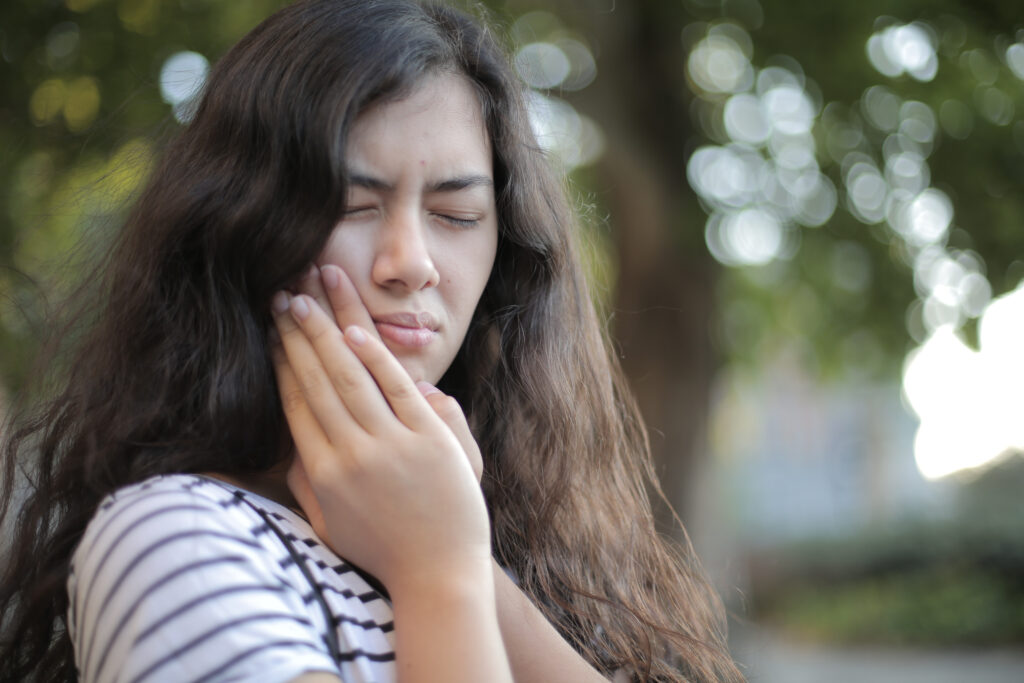
Acupuncture increases the effectiveness of pain medications to relieve trigeminal neuralgia. A 2017 face pain research study published in the Shanghai Journal of Acupuncture found that acupuncture boosted pain medication benefits. Specifically, researchers prescribed the pain medication carbamazepine, which had a 70 percent effectiveness rate. Adding acupuncture to the treatment protocol increased the total effective rate to 90.3%.
What is Trigeminal Neuralgia?
Trigeminal neuralgia is a debilitating facial nerve pain condition that affects one side of the face. Some patients have pain along the jawline, others feel it around their nose, and others around the eye. Some will feel pain in all of these areas – it all depends upon which facial nerves are affected.
What is Carbamazepine?
Carbamazepine is a pain medication in the benzodiazepine family. Sold under the trade name Tegretol, carbamazepine is an anticonvulsant medication used primarily to treat epilepsy and nerve pain.
Face Pain Research Design
61 patients participated in the face pain research study. Investigators randomly divided them into an “acupuncture plus drugs” group and a “drugs only” group, with 31 and 30 patients respectively. Inclusion criteria included being diagnosed with trigeminal neuralgia according to the International Classification of Headache Disorders (ICHD-3). All the patients participating in the study experienced frequent, debilitating facial pain attacks.
Exclusion Factors
Patients were excluded from the study if they presented with:
- Heart, liver, or kidney diseases that could affect drug metabolism.
- Infections, ulcers, scars, and other abnormalities at the location of acupuncture points.
- Malignant tumors, blood system diseases, cerebrovascular disorders, and other serious life-threatening conditions.
- Pregnant or lactating women.
Statistical Breakdown of Groups
- Acupuncture Plus Drugs Group – 13 males and 18 females, with an average age of 54 years, and an average course of disease of 4.7 years.
- Drugs Only Group – 12 males and 18 females, with an average age of 59 years, and an average course of disease of 6.6 years.
- There were no significant statistical differences related to gender, age, and course of disease relevant to patient outcome measures.
Medication Treatment
Both groups in this face pain research study received the same drug therapy. The dose of carbamazepine started at 100 mg and increased by 100 mg every day until achieving pain control. The average dose was 400–800 mg per day. The maximum dose was 1200 mg. After reaching the maximum, the dose was gradually decreased to obtain the minimum effective dose. Participants took the medication twice a day for seven days. All patients received four weeks of treatment.
Face Pain Acupuncture Treatment
The primary points selected for acupuncture treatment included:
- Heart point (Auricular)
- Lung point (Auricular)
- Shenmen (Auricular)
- LI20 (Yingxiang)
- EX-HN-22 (Anmian)
- ST36 (Zusanli)
- ST2 (Sibai)
- ST4 (Dicang)
- ST7 (Xiaguan)
- ST44 (Neiting)
- LV3 (Taichong)
- Ashi (tender) points
Practitioners selected additional acupoints on an individual basis.
- For ophthalmic (eye) pain:
- BL2 (Cuanzhu)
- GB14 (Yangbai)
- For maxillary (cheek) pain:
- ST3 (Juliao)
- SI18 (Quanliao)
- For mandibular (mouth) pain:
- CV24 (Chengjiang)
- ST6 (Jiache)
Needle Technique
Upon insertion, practitioners obtained a “deqi” sensation at the site of the needle. This classic TCM (Traditional Chinese Medicine) technique assures optimal effectiveness of the treatment. Patients received treatments once a day, six days a week. Each treatment course consisted of 6 days, followed by a 1-day break. All patients received four treatment courses.
[Editor’s Note: In the US, we treat patients once a week with fewer total treatments and get excellent results. Typically, 8 – 12 treatments are required to get the results described in this face pain research study. Treating daily with a high number of treatments was common in China’s past and is still observed in some of their research studies, but is not essential for good outcomes.]
Evaluation
Investigators evaluated patients before and after the full treatment course. First, all participants performed Visual Analogue Scale (VAS) assessments before and after their treatments to measure pain intensity. Second, researchers documented pain frequency. Third, they measured quality of life based on the MOS 36-item short-form health survey. Finally, following the completion of treatment, they categorized the efficacy rates for each patient into 4 tiers:
- Recovery: pain stopped and did not recur during a 6 month follow-up period.
- Significantly effective: pain was significantly relieved, and pain frequency was reduced by 75%.
- Effective: pain was relieved, and pain frequency was reduced by 50%.
- Ineffective: no change in pain, and pain frequency was reduced by less than 25%.
Face Pain Research Conclusions
This face pain research indicates that acupuncture plus drug therapy is more effective than drug monotherapy. Carbamazepine monotherapy produced a 70% total effective rate, while acupuncture plus carbamazepine yielded a total effective rate of 90.3%.
Researchers concluded that acupuncture was safe and effective for the treatment of trigeminal neuralgia. An important feature of TCM protocols is that they improve short-term and long-term patient outcomes without causing significant adverse effects.
Next Steps
If you struggle with trigeminal neuralgia or another type of face pain (nerve-related or not), try acupuncture. You’ll know within four treatments if acupuncture is helping. It does for a vast majority of our patients.
BOOK NOW to schedule an appointment online.
Watch Video About Our Face Pain Treatment.
Learn about all the conditions we treat.
Additional Face Pain Resources
Face Pain Acupuncture Research study.
First Face Pain Acupuncture Case Study.
Second Face Pain Acupuncture Case Study.
Second Trigeminal Neuralgia Acupuncture Research Study.
Trigeminal Neuralgia Acupuncture Case Study.
Reference
Pan ZQ, Fu RY, Lin XM. Clinical Study on Mind-regulating Acupuncture in Treating Primary Trigeminal Neuralgia. Shanghai Journal of Acupuncture and Moxibustion, 2017, 36(9):1069-1073.
Focus Keyphrase: face pain research
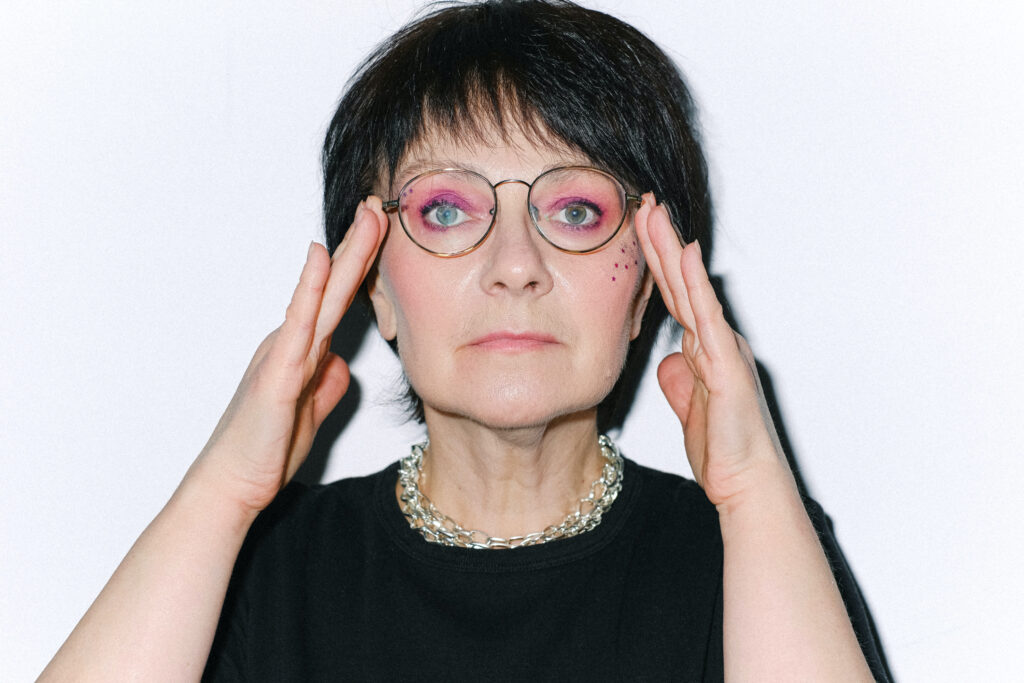
Our patient was a 56-year-old woman who had developed stabbing face pain the year before after getting dental work. She had been subsequently diagnosed with trigeminal neuralgia on the right side of her face. This trigeminal neuralgia acupuncture case study describes how we reduced her pain levels by 80 percent.
Trigeminal neuralgia is a flare-up of one, two, or all three facial nerves that run across the front of the face. One pathway traverses the eye, the second crosses the cheek and nose, and the third travels across the mouth. It is a severe condition and feels like an electric shock is striking the face.
Trigeminal Neuralgia Acupuncture Case Study
In this trigeminal neuralgia acupuncture case study, our patient developed her condition following dental work on the right side of her mouth. A nerve got damaged, resulting in her situation. The pain was 10 out of 10 and caused her tremendous distress.
She was on heavy-duty pain medication, which barely helped. An experimental Western medical procedure was expensive and often resulted in adverse side effects, so she sought out acupuncture as a less invasive place to start her treatment.
At her first visit, we conducted a full intake exam, assessing her condition. Her face pain came in waves, lasting approximately 15 to 45 seconds at a time throughout the day and night. The pain was off the charts – she described it as a 12 out of 10, and she reported having 20 to 30 episodes a day.
At Raleigh Acupuncture, we have developed a robust protocol for reducing trigeminal neuralgia pain. It consists of utilizing local acupoints on the face to quiet and heal the damaged nerves in conjunction with points on the body to increase blood circulation and decrease inflammation. Together these points speed healing and reduce pain.
In this trigeminal neuralgia acupuncture case study, our patient began feeling better after the first treatment. Both her pain levels and frequency of pain decreased by 10 percent. After two more treatments, acupuncture further decreased her levels by 20 percent. We continued weekly therapy for six more weeks, at which time her pain was 60 percent improved.
Long Lasting Relief
At this time, our patient had to travel out of the country for a month. On her return, she reported that pain from the trigeminal neuralgia had only slightly increased. She received another four treatments, once a week. At this point, she was 80 percent better and seemed to plateau. We paused treatment for a month, during which time she sustained the benefits and remained 80 percent better.
Sometimes we can help a patient recover 100 percent, and other times recovery is significant but not complete. In this trigeminal neuralgia acupuncture case study, our patient had 20 percent residual pain, which is not ideal, but was a considerable improvement from where she started. She told us that she sometimes did not want to go on living at the peak of her pain. And now she was enjoying life again, able to manage her face pain.
Trigeminal neuralgia is a terrible pain condition without many good options for Western medical treatment. Acupuncture is safe, natural, and has no adverse side effects. Furthermore, acupuncture delivers long-lasting pain reduction. In many cases, we can resolve the face pain completely, and other times (as in this trigeminal neuralgia acupuncture case study), we can deliver anywhere from 30 to 90 percent pain relief.
Next Steps
If you, or someone you know, suffer from trigeminal neuralgia face pain, try acupuncture. The procedure is safe – we use sterile, single-use, hair-thin needles. And treatment provides long-term relief.
Book Now To Schedule An Appointment Online.
Watch Video About Our Trigeminal Neuralgia Treatment.
Learn About All The Conditions We Treat.
Face Pain Resolved
This trigeminal neuralgia acupuncture case study describes the fantastic healing benefits of acupuncture. Come in and experience it for yourself.

Acupuncture provides significant therapeutic clinical benefits for trigeminal neuralgia patients and shortens the duration of hospitalization. This trigeminal neuralgia acupuncture research concludes that acupuncture significantly reduces and often eliminates face pain induced from trigeminal neuralgia.
What Is Trigeminal Neuralgia?
Trigeminal neuralgia causes intense facial pain. It is a severe facial pain disorder following cranial nerve V. The pain is most often one-sided, stabbing, nerve-like, and unbearable. Daily activities exacerbate the condition, including speaking, chewing, smiling, drinking cold or hot liquids, touch, exposure to cold air, and brushing teeth.
Trigeminal Neuralgia Acupuncture Research
Investigators conducted a controlled experiment comparing the effectiveness of carbamazepine with acupuncture. Carbamazepine is an FDA approved medication for trigeminal neuralgia. It also controls seizures in epileptic patients and mania in bipolar patients.
22 out of 40 patients in the carbamazepine group fully recovered compared to 30 out of 40 patients in the acupuncture group. The results yield a 55% cure rate for carbamazepine and 70% for acupuncture.
Acupuncture Better Than Medication
Acupuncture proved a higher total effective rate than carbamazepine. The total effective rate includes all patient improvements ranging from mild to cured. Carbamazepine produced an 87.50% effective rate, while acupuncture achieved a 95% effective rate.
Based on the findings, the researchers suggest incorporating a Traditional Chinese Medicine (TCM) protocol for patients with trigeminal neuralgia combining both medications and acupuncture in a treatment regimen. They believe this may produce even more significant results than using either modality alone.
More acupuncture research is needed to determine if combining mediations with acupuncture to treat trigeminal neuralgia produces an additive or synergistic effect.
Study Design
The study randomly divided 80 patients with primary stage trigeminal neuralgia into acupuncture and medication groups. The 40 outpatients from the acupuncture group consisted of 16 male and 24 female patients ranging from 45 to 68 years old, having symptoms of approximately nine years.
The carbamazepine group comprised 18 male and 22 female patients ranging from 47 to 69 years old, with an average symptom duration of approximately ten years. Before their treatments, all patients had a full physical examination and head CT scan. All had similar symptoms, including speaking and eating difficulties, significant pain, and face muscle cramping.
Treatment Methods
The medication group patients initially took 100 mg of carbamazepine tablets two times per day. The dosage increased to 4 times a day and expanded according to a patient’s condition. The maximum dose limit was one gram a day. If pain levels significantly reduced with a specific dose range within two days, patients leveled off at 500 – 800 mg a day.
The acupuncture group received sterile, single-use needles at the following acupoints: Tai Yang, LI4, LI7, ST7, Yin Tang, DU20, GB20, and ST6.
Practitioners first applied acupuncture to Tai Yang, followed by ST6 toward the zygomatic arch. Activating the Qi at these two points induced a significant analgesic effect. Next, they needled Bai Hui and Yin Tang, followed by GB20. The last insertions included LI4 and LI7.
Powerful Results
Acupuncture effectively resolved trigeminal neuralgia using this specific treatment procedure. The advantages of acupuncture over carbamazepine include avoiding adverse reactions. Carbamazepine can induce Stevens-Johnson syndrome and toxic epidermal necrolysis.
Also, acupuncture was clinically more effective than carbamazepine. Notably, the researchers suggest combining medications with acupuncture may produce even more beneficial patient outcomes than therapy separately.
Next Steps
The practitioners at Raleigh Acupuncture have been successfully treating trigeminal neuralgia patients for over 15 years. Treatments are safe, with no adverse effects, and results are long-lasting.
BOOK NOW to schedule an appointment online.
Watch Video About Our Trigeminal Neuralgia Treatment.
Learn About All The Conditions We Treat.
Acupuncture Resolves Trigeminal Neuralgia
The pain from trigeminal neuralgia is excruciating. And Western medical options are limited. Try acupuncture first, or in combination with medications, and discover how this ancient medical treatment can help resolve your pain.
References
Chen Kepeng, Tian Long. Clinical discussion on treating primary trigeminal neuralgia; Clinical Journal of Chinese Medicine, 2015 (13).
Xia Caiqiu, Xun Xuelian, Liu Shuang, Wang Chunbo, Liu Mingliang. Discussion on primary trigeminal neuralgia treatments; Chinese Journal of Modern Drug Application, 2010 (4).
There are many types of face pain, but one of the worst is trigeminal neuralgia. It’s triggered by a flare of the facial nerves, of which there are three. One runs up toward the eye, one toward the nose, and one near the mouth. In this face pain acupuncture case study, our patient experienced pain in all three areas. Acupuncture was able to bring her relief.

Trigeminal Neuralgia – The Worst Pain Ever
We treat pain all day long. So we see how debilitating it is for people. Back pain, sciatica, migraines and IBS can make life miserable. There is one pain that is often considered the worst. It’s trigeminal neuralgia. Something about the nerve sensation it causes on the face, and about the intensity of that pain, drives people to a state of desperation.
Luckily, acupuncture calms this pain. In many cases it can resolve it. For others, it manages it, bringing people into remission for a length of time. In this face pain acupuncture case study, our treatments were able to control trigeminal pain with regular monthly acupuncture treatments.
Face Pain Acupuncture Case Study
Our patient was a 42 year old woman. She was a highly successful small business owner, hard working, busy and not prepared for the excruciating pain this condition would bring. She came to our office after suffering for over a year. Pain medications were not helping and she was besides herself. It was impossible for her to manage her business and her family while dealing with the severe stabbing pain in her face. Her condition impacted the entire left side of her face, including her eye, nose and mouth.
Acupuncture Treatment for Trigeminal Neuralgia
Over the past 15 years Raleigh Acupuncture has developed a powerful protocol for treating trigeminal neuralgia. It involves using acupuncture to “quiet the nerves” of the face. In many cases the treatment resolves the condition completely. In others, it brings the patient into remission.
This face pain acupuncture case study describes how over the course of ten treatments, acupuncture was able to quiet her face pain to the point where she did not need medication and was able to function well in life again. Here’s how we did it.
Treatment Details
Our treatment involved using local acupuncture points in combination with distal points on the arms and legs. The local points quieted the facial nerves, allowing them to heal and stop flaring. The body points strengthened our patient’s organ function, increasing her blood and qi circulation, to heal her nervous system as a whole. This two prong approach, treating the root and branch, is a signature of Chinese medicine, and is one of the reasons acupuncture delivers such effective, long lasting results.
The following are some of the acupuncture points chosen on her face, on the affected side: BL2, GB14, TW21, Taiyang, ST4, ST3, LI20 and SI18. Distal points on the arms and legs included: GB34, ST36, LI4 and TW5. Points varied from treatment to treatment. Electroacupuncture was used at times to enhance the effect of the treatment.
It’s important to remember that every acupuncture treatment is custom designed for the patient, based on how they present at the time. As their condition improves, the treatments are adjusted to provide the maximum benefit. Treatments are constantly evolving to deliver a powerful healing experience.

Results
After 10 treatments, once a week, her pain was 90% resolved. At that point she dropped down to monthly maintenance sessions. A month later she was in full remission. Over the next two years her face pain would occasionally flare during times of heightened stress, but quickly diminished after receiving just a single acupuncture treatment. She is still coming for her monthly maintenance, still feeling good.
Next Steps
If you suffer from trigeminal neuralgia, try acupuncture. It’s the most effective, safe, natural treatment to reduce and resolve face pain. This face pain acupuncture case study is a typical example of what we see at Raleigh Acupuncture. Come experience the benefits for yourself.
BOOK NOW to schedule an appointment online.
WATCH VIDEO ABOUT OUR TRIGEMINAL NEURALGIA TREATMENT.
LEARN ABOUT OTHER PAIN CONDITIONS WE TREAT.
Acupuncture Relieves Facial Nerve Pain Research
A 2012 research study established acupuncture’s effectiveness for treating trigeminal neuralgia. Trigeminal neuralgia (TN) presents as intense pain in the face and is considered one of the most painful conditions a person can experience. Luckily it is rare, affecting one in 15,000 people. However, that number is still too common. We treat many patients each year for this type of face pain.

TN involves dysfunction of the trigeminal nerve, which is located on the face in three branches: ophthalmic (toward the eye), maxillary (toward the nose) and the mandibular (toward the mouth). The trigeminal nerve is responsible for sensing pressure, temperature and pain.
Study Details
This facial nerve pain research study focused on patients who presented with a specific pattern imbalance of trigeminal neuralgia called Liver Yang Rising. It then compared deep needling versus shallow needling acupuncture techniques.
The acupuncture points used in the study included ST7 (Xiaguan), LI4 (Hegu), LV3 (Taichong), BL2 (Zanzhu), ST2 (Sibai) and Jiachengjiang (M-HN-18). Electroacupuncture was used in both the shallow and deep needle groups. Treatments lasted 30 minutes, and were given every other day.
Results
The following results were obtained from the facial nerve pain research study. The total effective rate in the deep needling group was 93.8 percent. In the shallow needling group, the total effective rate was 87.1 percent. The researchers concluded that electroacupuncture was an effective treatment for relieving facial pain due to trigeminal neuralgia. In addition, the outcomes reveal that deep needling is more effective than shallow needling.
Special Note on Acupuncture Point ST7
ST7 (pronounced Stomach 7) is a local facial acupuncture point with special significance. It is the meeting point of the Stomach (Yangming) and Gall Bladder (Shaoyang) channels. It has important functionality for relieving pain in the jaw, cheeks, ears, teeth, mouth and eyes. It is located at the lower border of the zygomatic arch in the depression in front of the mandible (jaw bone). It is often needled 0.5 cun anterior to its classical location for cases of trigeminal neuralgia.
Next Steps
Raleigh Acupuncture has been successfully treating facial nerve pain and trigeminal neuralgia for years. We have a high rate of success reducing pain in the face. Acupuncture is well suited for calming facial nerves and alleviating debilitating facial nerve pain.
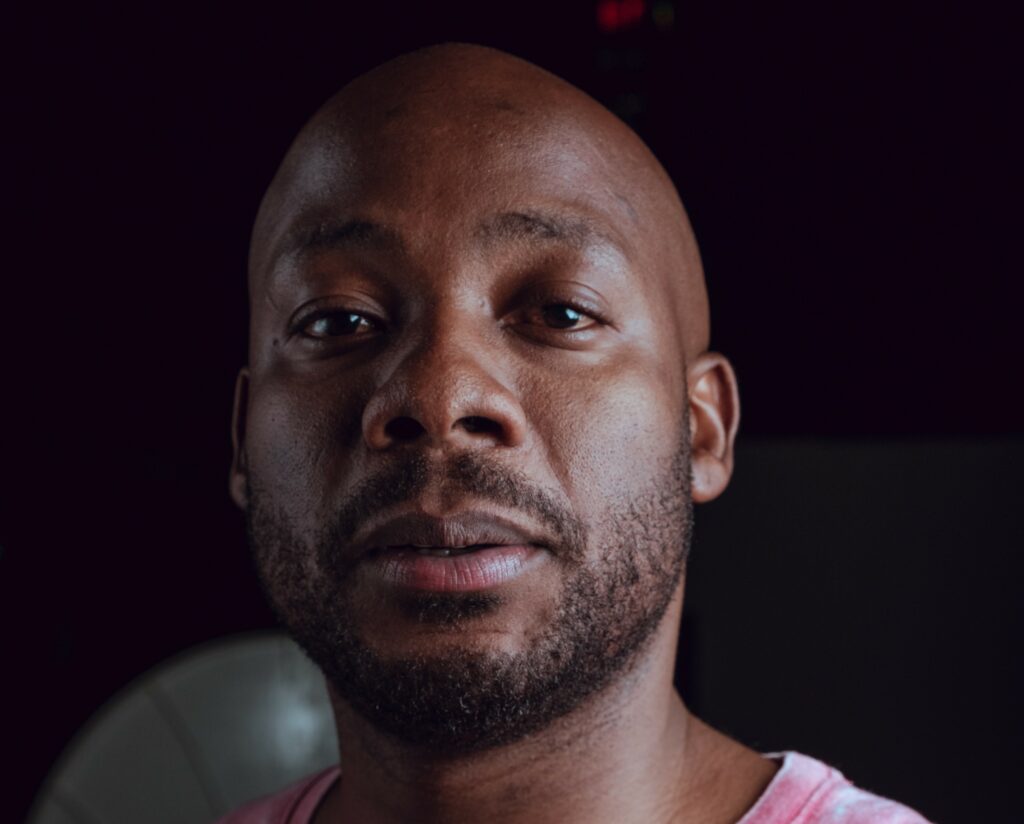
BOOK NOW to schedule an appointment online.
WATCH VIDEO ON OUR FACIAL NERVE PAIN TREATMENT.
LEARN ABOUT OTHER PAIN CONDITIONS WE TREAT.
References
Trigeminal neuralgia of hyperactive of liver yang type treated with acupuncture at Xiaguan (ST 7) at different depth: a randomized controlled trial. HE Lan, ZHOU Wan-yu, ZHANG Xiu-mei. TCM Department,The Third Hospital Affiliated to Beijing University,Beijing,China; Department of Ophthalmology, Xiyuan Hospital, China Academy of Chinese Medical Sciences.
Trigeminal Neuralgia Acupuncture Research
For more information about our trigeminal neuralgia treatment, CLICK HERE.
We treat many types of facial pain at Raleigh Acupuncture. This includes TMJ (jaw pain), trigeminal neuralgia, bells palsy, sinus pressure, and tension headaches. Each case requires a specific treatment plan, and we achieve good results most of the time. So let’s take a look at each of these types of pain.
Facial Pain Acupuncture Treatment
TMJ (Jaw Pain)
With 3 million Americans a year dealing with this facial pain, it’s no surprise we get so many calls about it. The temporomandibular joint or TMJ acts like a sliding hinge, connecting your jawbone to your skull. Dysfunction can lead to pain and discomfort, including facial pain and headaches. Jaw pain, difficulty chewing, and clicking and locking of the jaw joint are some of the symptoms.
Acupuncture heals jaw dysfunction by increasing blood and Qi circulation in the joints, allowing them to function without pain. In addition, it releases tight muscles in the jaw, face, and head, allowing the joint to function correctly.

Our TMJ patients start seeing results within the first few treatments. Their pain often involves not just the jaw but also the head, neck, and shoulder. In these cases, we treat the entire area, restoring muscle function, improving blood circulation, and reducing pain.
Trigeminal Neuralgia
TN is one of the worst facial pain conditions imaginable. It is a stabbing nerve pain that comes in waves through the face. It typically affects just one side of the face and is often triggered by dental work (root canals are a primary culprit).
Patients experience trigeminal neuralgia as episodes of severe shooting or jabbing pain that feels like an electric shock. Triggers for these spontaneous, random, continuous pain attacks include touching the face, chewing, speaking, or brushing teeth. Once it sets in, TN can last for months, sometimes years.

Acupuncture reduces TN pain by calming the nerves. Quieting the facial nerves is the most effective way to stop this pain. Over 80% of our trigeminal neuralgia patients get relief from acupuncture. When needed, we refer patients who do not respond to surgeons for more invasive treatment. But it’s always a good idea to try acupuncture first.
Bell’s Palsy
Bell’s palsy is facial paralysis on one side of the face – it strikes instantly. One minute you are fine. The next, half of your face becomes paralyzed. Patients cannot blink or smile on one side of their face. There is often facial pain with numbness or tingling. Sometimes the condition resolves itself in 3 to 6 months, but other times it is permanent.
Doctors treat Bell’s palsy with anti-viral and steroid medications. Then they send you home to wait. We suggest you come for acupuncture treatment immediately after taking these Western medications. The combination of drugs and acupuncture will improve your chances of full recovery.

Acupuncture helps the body restore normal nerve function to the face. It is similar to our trigeminal neuralgia treatment. Both conditions involve facial nerve dysfunction, although the trigger of the problem is different. For example, Chinese medicine explains Bell’s Palsy as Wind Stroke causing paralysis.
Chronic Sinus Pressure
Do you have constant sinus blockage? Does it cause facial and head pain? Acupuncture can reopen up your sinuses and keep them open. We treat the underlying root cause of your sinus blockage, providing long-term relief.
Sinus pressure stems from an imbalance in the body’s water metabolism. Chinese medicine describes this imbalance as weakness in the Spleen function. As a result, excess dampness and phlegm accumulate in the head and block the sinuses. Treatment involves opening the blocked sinuses AND addressing the root weakness with the Spleen.
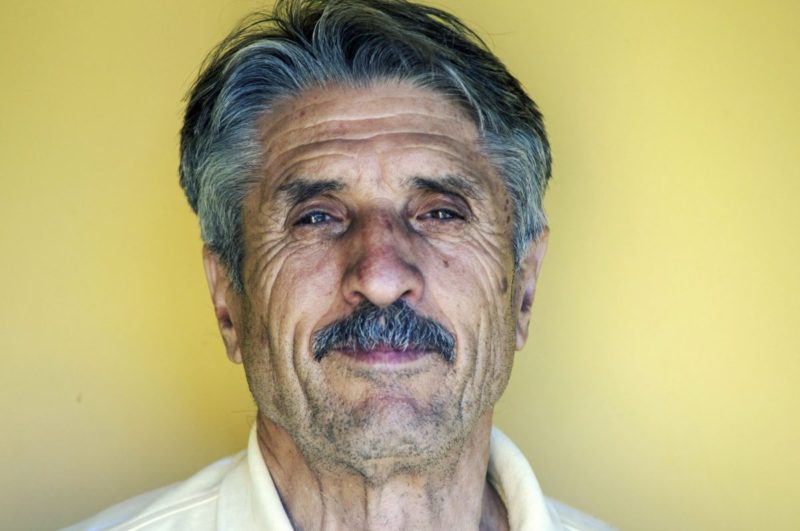
You can open the sinuses all day long, but they will fill up again if you don’t address the root issue. Treating both is the only way to provide long-lasting results. Acupuncture provides this.
Tension Headaches
Technically headaches are “head” pain, not “face” pain. However, tension headaches often affect the forehead, eyes, temples, and jaw. The source of tension headaches can be tight neck and shoulder muscles, tight jaw muscles, stress, anxiety, and lack of sleep, to name just a few.
When patients come in with tension headaches, we first identify the source of the problem. For example, frontal headaches can often come from sinus congestion. That would require addressing the Spleen. Headaches in the temples are often due to stress-causing neck pain that radiates to the temples. For stress, we need to treat locally but also address Liver function. Good Liver function means less stress.

Acupuncture treats all types of headaches and migraines. There are about 20 distinct headaches, all requiring slightly different treatment. Try acupuncture if you are tired of taking pain medicines for your headaches.
Facial Pain Treatment – What To Expect
All needles are sterile, single-use, and hair-thin. And treatments are relaxing – many of our patients fall asleep during their sessions. You will wake feeling refreshed and rejuvenated.
Next Steps
BOOK NOW to schedule an appointment online.
WATCH VIDEO ON OUR JAW PAIN/TMJ TREATMENT.
WATCH VIDEO ON OUR TRIGEMINAL NEURALGIA & BELL’S PALSY TREATMENTS.
WATCH VIDEO ON OUR HEADACHE TREATMENT.
LEARN MORE ABOUT ALL THE PAIN CONDITIONS WE TREAT.
Facial Pain Research and Case Studies
First Face Pain Research Study.
Second Face Pain Research Study.
First Facial Pain Acupuncture Case Study.
Second Facial Pain Acupuncture Case Study.
The Raleigh Acupuncture trigeminal neuralgia treatment works best for resolving face pain. Treatments are safe, natural, and provide long-lasting relief.
Raleigh Acupuncture Trigeminal Neuralgia Treatment
Watch this video to learn more about our treatment.
What Is Trigeminal Neuralgia?
Wikipedia explains the condition this way:
Trigeminal neuralgia (TN or TGN) is a long-term pain disorder that affects the trigeminal nerve, the nerve responsible for facial sensation and motor functions such as biting and chewing. It is a form of neuropathic pain. There are two main types: typical and atypical trigeminal neuralgia. The typical form results in episodes of severe, sudden, shock-like pain in one side of the face that lasts for seconds to a few minutes. Groups of these episodes can occur over a few hours. The atypical form results in a constant burning pain that is less severe. Any touch may trigger episodes in the face. Both forms may occur in the same person. It is regarded as one of the most painful disorders known to medicine and often results in depression.
Acupuncture Relieves Trigeminal Neuralgia
When you come in for acupuncture to treat trigeminal neuralgia (TN), we conduct an intake exam to identify your pain areas. We then use hair-thin, sterile, single-use needles to heal the affected nerves.
Acupuncture is ideally suited for treating this condition. It is the only non-invasive therapy known to subdue overactive nerves. Our treatment calms these nerves, bringing lasting relief. From a Chinese medicine perspective, there are half a dozen possible triggers for this condition. Therefore, we identify your Chinese medicine diagnosis and treat it accordingly.
As we help your body restore balance, pressure is relieved on the nerves of the face, reducing pain. Some of the points in your treatment are on the arms and legs. These points help balance your internal organs to promote the nerves to heal.
Other points are directly on your face. They work to calm the nerves and reduce pain. The combination of distal and local points will differ for each patient, depending on your presentation.

Western Medicine Limited Options
Western medicine offers medications, injections, and surgery to treat trigeminal neuralgia. Unfortunately, none of these options is particularly effective, and all have adverse side effects. Before trying more invasive therapies, give acupuncture a try. It is effective, non-invasive, and provides direct healing to the damaged nerves responsible for your pain.
What To Expect
All needles are sterile, single-use, and hair-thin. The treatments are relaxing – many of our patients fall asleep during their sessions. You will wake feeling refreshed and rejuvenated.
Recent Trigeminal Neuralgia Case
A 43-year-old woman came to our clinic having been diagnosed with trigeminal neuralgia. She presented with severe, shooting nerve pain on the right side of her face around the eye, nose, and mouth. The pain was intense, 10 out of 10, coming in waves lasting 15 to 30 seconds at a time throughout the day.
Our treatment included needling acupoints on the affected side of her face to calm the agitated nerves. We also applied distal points on her arms and legs to reduce inflammation and promote blood circulation to the face. Our patient found the treatments calming and relaxing. More importantly, the pain reduced by 20 percent following her first treatment.
At the end of four sessions, she was 70 percent better, with fewer flares and reduced pain intensity. After another four treatments, she was ultimately better, pain-free. Acupuncture resolved her condition by promoting the healing of her facial nerves.
Next Steps
BOOK NOW to schedule an appointment online.
VIDEO – Raleigh Acupuncture Trigeminal Neuralgia Treatment.
Learn about all the conditions we treat.
Acupuncture Research and Case Studies
Trigeminal Neuralgia Acupuncture Research Study.
Trigeminal Neuralgia Acupuncture Case Study.
Focus Keyphrase: Raleigh Acupuncture Trigeminal Neuralgia
What our Clients are Saying
My dentist damaged a nerve in my face that triggered terrible trigeminal neuralgia. The pain in my face was way more than 10 out of 10. I could not think, could not work, could not sleep. I truly thought my life was over. But thanks to Raleigh Acupuncture Associates I am 95% better. It took three months of treatment, but it was worth it. My regular doctor had no solution for me. His pain medicine did not work. I tried an $8000 procedure of laser cutting, and that did not work. But acupuncture DID work. I’m telling you, if you have trigeminal neuralgia in your face, come to these guys. I love them!
I woke up one morning and started getting these excruciatingly painful shooting electric pains on the left side of my face. My wife took me to the emergency room and they said I had trigeminal neuralgia. They gave me some pain medicine, but a nurse there suggested I try acupuncture. She had this pain once and it was cured by acupuncture. She gave me the name of Raleigh Acupuncture. When I explained the situation they took me in the same day. After just one treatment I started feeling better. They saw me every day for six days, at which point the pain was completely gone. What a life saver. I strongly recommend getting acupuncture for trigeminal neuralgia.

